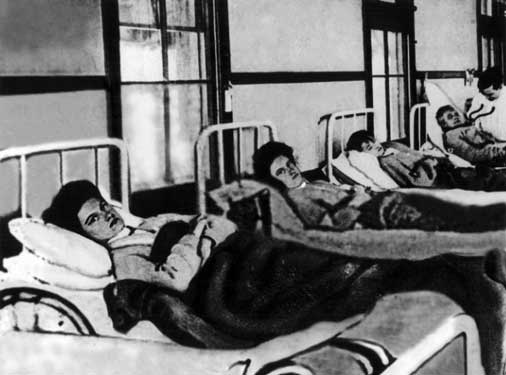I hope you all are staying well. I read that in Iceland they are testing everybody for the coronavirus, not just those who present with symptoms. Although they haven’t tested the entire population yet, they have discovered that about half of those who tested positive were asymptomatic.
That’s right, lots of people who haven’t shown symptoms or been tested (don’t get me started on that) are carrying the virus. And can share the virus with others.
So this week I’m going to introduce you to Mary Mallon, otherwise known as Typhoid Mary. She’s known as the first asymptomatic carrier of typhoid.
First, typhoid fever is a bacterial infection. It can only spread where human feces come into contact with food or water. So people should wash their hands, be careful about where they prepare food, and know the source of their drinking water.
Starting around 1900, Mallon (1869-1938) worked as a cook in New York City, working for mostly wealthy families that could afford their own cook. She moved from household to household, never staying long, leaving a trail of sick people behind.

In 1906, one of the families who had suffered from typhoid hired a researcher to find the source of their outbreak. He found that the family had hired a new cook just before their outbreak and she had since moved on.
Once a possible carrier was identified, the researcher eventually located Mallon due to another outbreak in her latest place of employment. When she refused to be tested, he investigated her work history and found that almost all previous families claimed to have suffered from typhoid fever around the time she worked for them.
Even though Mallon refused to be tested, it was determined that she was a carrier of the disease. Because she refused to be tested and refused to give up her work as a cook, she was held in isolation at a hospital.
After three years in quarantine, she was allowed to leave if she agreed to practice better hygiene and to quit working as a cook.
After her release she worked as a laundress. But that simply did not pay as much as working as a cook.
So she changed her name and went back to cooking. She never stayed long in any one place, and she almost always left a typhoid outbreak in her wake. And this was the early 20th century and it was a lot harder to find someone who didn’t want to be found.
Until 1915, when she started an outbreak at a hospital in which two people died. The police finally found her after that one.
This time she was confined to a hospital from 1915 until her death in 1938. There is no way to know for sure how many people became ill and how many died due to Mallon, but she spent more than a third of her life locked up to prevent any more.
If you are a fan of Anthony Bourdain and enjoy his signature style of storytelling, check out his book Typhoid Mary: An Urban Historical.
And remember, just because you’re not sick doesn’t mean you can’t get other people sick. Also, wash your hands.
